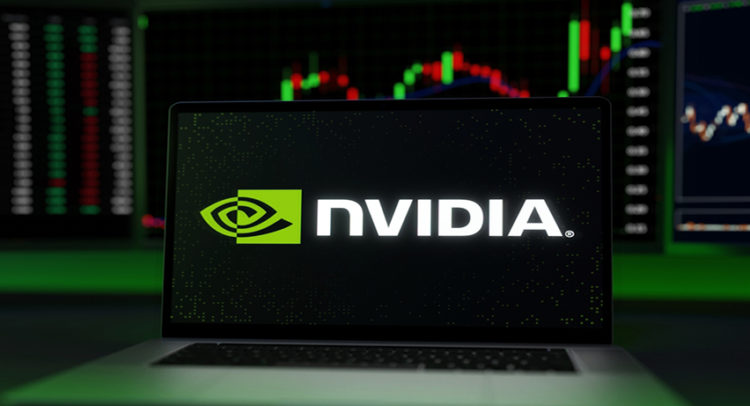Large positions in artificial intelligence darling Nvidia have increased portfolio managers’ gains this year, but if the chipmaker’s red-hot shares reverse, the bets might increase risk
Nvidia shares have increased by approximately 785% since the beginning of 2023 and have increased by approximately 160% this year alone.
This increase is attributed to the demand for its processors, which are considered the leading artificial intelligence technology. In June, Nvidia temporarily held the title of the world’s most valuable company, but a subsequent decline in its stock price resulted in Microsoft reclaiming the position.
The chipmaker’s stock price has increased with the increase in asset managers’ holdings. According to Morningstar data, 355 actively managed funds held Nvidia positions that accounted for 5% or more of their assets after the first quarter, as opposed to only 108 funds in the same period last year.
For various purposes, including maximizing profits or monitoring a stock’s weight in an index to which the fund is benchmarked, funds may maintain substantial positions in a single holding.
A senior Morningstar analyst, Jack Shannon, stated, “There is a perspective among certain portfolio managers that they have missed the boat on Apple or Microsoft and are apprehensive about being incorrect on AI.”
“They are not interested in selling.”
Another illustration of how investors have placed their bets on a small number of substantial growth stocks is the enormous positions in Nvidia, which have resulted in one of the most concentrated market advances in history.
According to S&P Dow Jones Indices, Nvidia has been responsible for approximately one-third of the S&P 500’s nearly 17% increase this year.
In general, the markets are the third-narrowest since 1986, with only 24% of equities in the S&P 500 outperforming the index in the first half, according to strategists at BofA Global Research.
To date, the funds that owned Nvidia have enjoyed the advantages. The average return of actively managed U.S. equity funds that held the stock over the first six months of 2024 was 16.3%. Meanwhile, according to Morningstar data, those who did not own Nvidia exhibited an average return of 5.7%.
If Nvidia shares experience a downturn, investors may be adversely affected by the concentration in a single stock. According to LSEG data, the average price target for the stock among analysts is $133.45, which is approximately 3% higher than its current value.
However, some market participants suggest that the company’s high valuation may cause a downturn, an anticipated equilibrium between supply and demand, as Nvidia increases production and increased competition.
According to LSEG, the stock is trading at 39.3 times forward earnings, approximately 50% higher than the industry median.
“Does the concentration of 6% or more of one stock in one’s portfolio result in disproportionate risks?” Phil Orlando, the chief equity market strategist at Federated Hermes, stated, “The answer is undoubtedly affirmative.”
“The fact that one stock took off like a rocket ship does not imply that it was wise to have so many eggs in one basket.”
A sharp, one-day rotation out of Big Tech stocks, triggered by more astonishing inflation data, gave investors a glimpse of the two-way nature of concentrated positions last week.
On Thursday, Nvidia experienced its most significant daily decline in over two weeks, dropping nearly 6%. Additionally, the Nasdaq 100, heavily weighted in technology, experienced a loss of approximately 2.2%. The subsequent day, both entities reduced their losses.
“TWIST OF REGRET”
According to Morningstar, all technology-sector funds have the highest weightings in Nvidia, with four Fidelity funds holding over 18% of their assets in the stock.
Other, more diversified funds are taking on similar risks. The Baron Fifth Avenue Growth fund holds nearly 15% of its portfolio in Nvidia, while the Fidelity Blue Chip Growth fund holds approximately 13% of its portfolio in the stock. Both organizations declined comments.
Since 2016, Anthony Zackery, a portfolio manager at Zevenbergen Capital Investments, has maintained a primary position in Nvidia. However, he has periodically reduced his holdings to adhere to his firm’s risk-tolerance guidelines.

To maintain alignment with the weightings of its benchmark, the Russell 3000 Growth Index, the fund can keep a maximum of 13% of a single stock in growth portfolios.
“This is a company that is at the forefront of the next trend in technology,” said the executive.
Conversely, some regret their decision to sell out utterly.
Kevin Landis, the chief investment officer at Firsthand Capital Management, stated that he was “prudent” and made profits in 2020 in an Nvidia position he had held for several years.
Nevertheless, he cannabinoid contemplated opportunities that he failed and could have capitalized on. He can’t look at any of my screens now without feeling a pang of regret,” said the individual.



